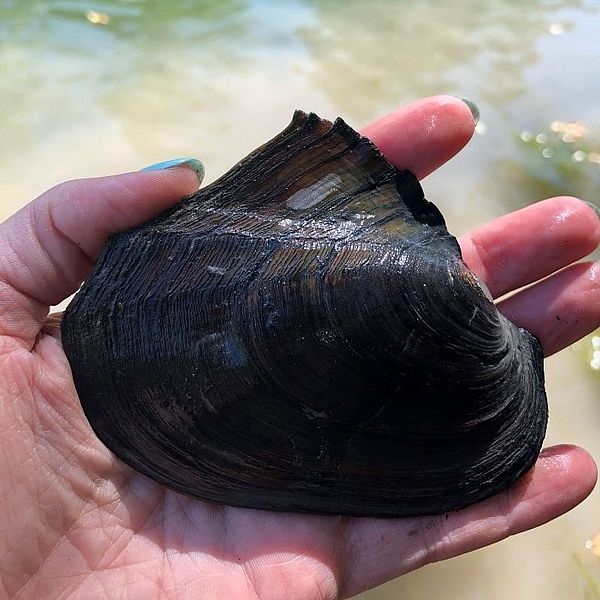If you’ve paddled, taken a swim, or cast a fishing line in the waterbodies of the Lake Champlain Basin, you’ve likely spent time among one of the most enigmatic groups of aquatic animals in our region: native freshwater mussels. They’re quirky—sporting hatchet-like shells and traveling by a single fleshy foot, yet familiar—related to the invasive zebra mussel and edible bivalves such as littleneck clams and scallops.
Native freshwater mussels are the most imperiled taxa in the Lake Champlain Basin. Vermont uses state ranks to describe the relative rarity of a species: S1 is very rare, S2 is rare, S3 is uncommon, S4 is common, and S5 is very common. In Vermont, 15 of the 18 native species are very rare, rare, or uncommon.
While invasive zebra mussels seriously threaten native freshwater mussels in the southern lake, their impact on populations in the northern lake is unclear. This field season, Lauren Sopher, LCC’s Director of Science & Water Programs and Michael Lew-Smith, Ecologist and Partner at Arrowwood Environmental, will assess impacts to native mussels in Lake Champlain’s Northeast Arm. They’ll investigate the distribution, abundance, and health of populations from Malletts Bay to St. Albans Bay. This project is the first step in the conservation process to ensure that this critical element of the lake’s biodiversity remains intact.
Have You Seen Native Mussels in the NE Arm?
Lauren and Michael are gathering anecdotal information about where folks have observed native freshwater mussel beds in the Northeast Arm of Lake Champlain (see adjacent map of study area).
Not sure what a native freshwater mussel looks like? View species profiles via The Vermont Freshwater Mussel Atlas, a project of The Vermont Center for Ecostudies. You don’t need to be able to identify the native mussel(s) you’ve previously observed to species. We only need the location for known native mussel beds you’ve seen in our study area. If you have information to share please fill out our online form. We are looking for the approximate latitude and longitude (coordinates) and a physical description of the area(s) where you observed the native freshwater mussel bed(s). Please share your information by mid-June to help with our field season planning.
Lauren and Michael will compile your feedback and investigate the sites for the presence of native mussels.We’ll provide updates on the project via our Facebook page, website, and E-Newsletter. If you have questions about the project or additional information to share, please contact Lauren at laurens@lakechamplaincommittee.org. LCC’s project is supported by the Lake Champlain Basin Program (LCBP) and the New England Interstate Water Pollution Control Commission (NEIWPCC).
Curious About Mussels?
To learn more, check out a fantastic episode on the Vermont PBS Outdoor Journal – Vermont’s Native Mussels, featuring Paul Marangelo, Senior Conservation Ecologist with The Nature Conservancy in Vermont.

